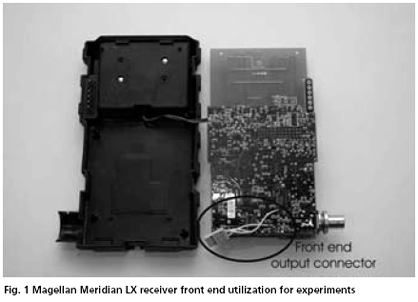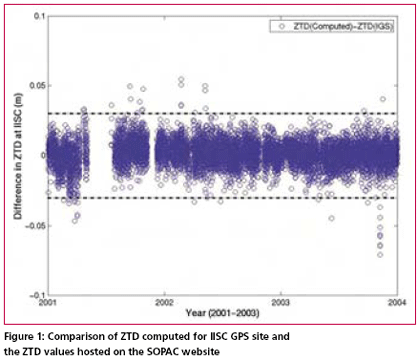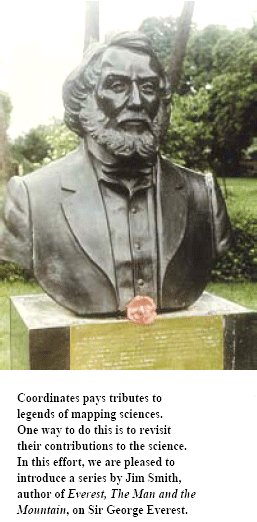Articles in the Articles Category

Many researchers and R&D laboratories in the world deal with the design of the software-based or experimental GNSS receivers using digital signal processing for work and experiments with received navigational signals. These concepts have one in common: the necessity of use of some analogue RF part before conversion of the signal to the digital domain. The problem of the RF front end design of the experimental or special purpose navigation receivers has to be solved. It is not an easy task as can be seen from many papers and conference contributions. The aim of this paper is analysis of the possibility of such GNSS RF front end design. We will discuss the following three main approaches

Atmospheric water vapour estimation from the GPS data, surface total pressure and the mean tropospheric temperature is the most cost effective method which gives all weather good spatio-temporal coverage. Precipitable Water Vapor (PWV) in the atmosphere can be estimated from GPS data by determining the travel time delay of GPS radio signals through the troposphere. Water vapour is already identified as…
Delhi faces confusion and chaos.
With a pressure to host Commonwealth games in 2010.
Unauthorized construction, encroachments, illegal …

Transformation of GPS derived ellipsoidal height to orthometric height is one of the most important applications of gravimetric geoid. Its applicability remains questionable if the above transformation cannot be done to a reasonable order of accuracy. Use of GPS observations at levelling benchmarks and subsequently determined geoidal seperation using the geometrical relationship between geoid and ellipsoid (see fig. 1 )…

The authors have continued a research on the prediction of earthquake using GPS data in Japan, one of the disaster prone countries since 2000. The authors have discovered pre-signals of those past big earthquakes with more than M6, such as Miyagi Offshore and Hokubu Earthquakes (2003.5.26; M7.1 and 7.26; M6.4), Tokachi Offshore Earthquake (2003.9.26; M8.0)…
April 2006
Geo-Siberia 2006
26-28 April in Novosibirsk, Russia
http://www.sibfair.ru/en/exhibition.php?id=533
May 2006
European …














 (5.00 out of 5)
(5.00 out of 5)